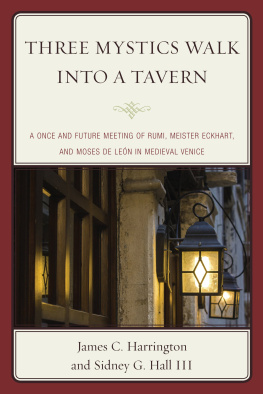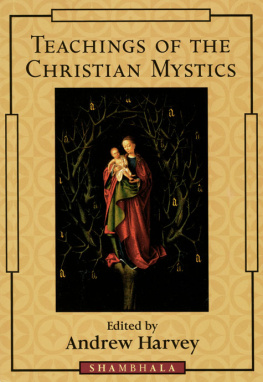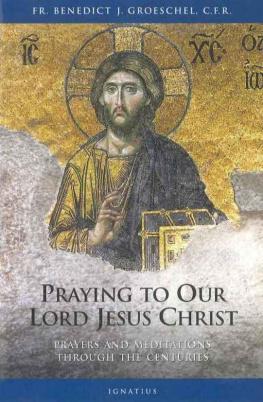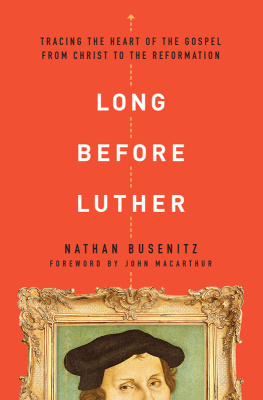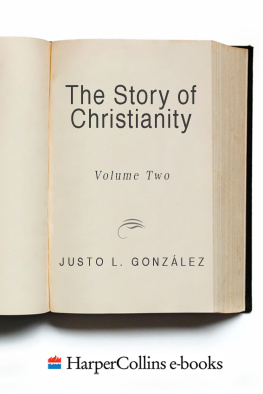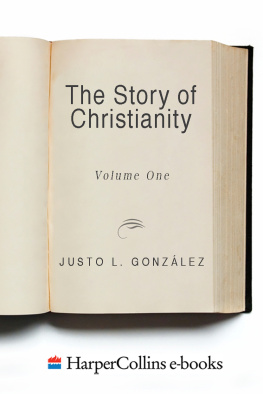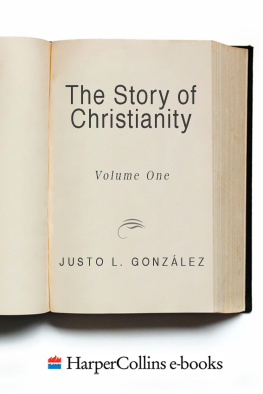Adam, so all will be made alive in Christ.
If tears are still shed in heaven, then carry my tears to the feet of God.
Preface
This book is but a small offering in that the reader will only gain a
limited taste of the wisdom of the early church fathers, the desert fathers, the monastic tradition, the leaders of the church throughout the Middle Ages, leaders of renewal movements, the medieval mystics, and the pre-Reformation reformers.
The reader will meet Justin Martyr, St. Ambrose, St. Augustine,
Gregory of Nyssa, St. Basil, St. Jerome, Thomas Aquinas, St. Francis, Bonaventure, Meister Eckhart, Hildegard of Bingen, Julian of Norwich, and John Hus, amongst many other leading figures over these fourteen centuries.
A wonderful outcome in engaging this book would be that the
reader, having tasted, might gain a hunger for more. The extensive reference material listed in the endnotes would be a place to start.
The question, however, needs to be posed: why engage Christians who lived such a long time ago? As they sought to live in fidelity to the gospel, were they not simply relevant for their time and not for ours?
The most basic answer to these questions is that these witnesses are part of our tradition. They have left us a legacy and we would do well to afford them a respectful hearing. Moreover, some of themmartyrs, monks, mystics, prophets, healers, theologians, revivalistsare the most exemplary Christians who have ever lived. We do ourselves a disservice not to be challenged by their lives, their writings, and their service. But finally, it could well be that our present-day Christianity, so shaped by the values of modernity, could learn from this ancient wisdom. It is possible that our Christianity could become revitalized and more robust by hearing the ancient wisdom.
Some major qualifiers are in order at this point. Just because I quote Maximus the Confessor or Gertrude the Great or Origen or St. Catherine of Genoa or St. Ephraem of Syrus, I am not, therefore, advocating everything they have written. This book is not a systematic treatment of any of the over seventy authors quoted. Moreover, I am also not entering the scholarly debate about contested dates and authorship of certain documents. The brief historical material I have provided in the index is from standard sources. Finally, this book is not pining for the good old days. It does not suggest we should go back to the past. It simply suggests we can learn from the wisdom of the past.
This book reflects almost a lifetime of reading. It has been written over a very long period of time and in various countries including Australia, the Philippines, Canada, Myanmar, and The Netherlands.
There are some special places where parts of this book were penned that I particularly wish to acknowledge: the Benedictine Monastery near Mission, British Columbia; the Myoora Retreat Centre of Chris and
Marilyn Brown, Currimundi Lake, Queensland; the holiday home of Dr. and Mrs. Paul and Gail Stevens, Ruxton Island, British Columbia; the holiday home of Drs. Terry and Rosie Gatfield, Mt. Tamborine, Queensland; The Winner Inn, Yangon; The Community of Rivendell, Bowen Island, British Columbia; Mt. Archer Christian Community, Woodford, Queensland; the retreat centre of the Sisters of the Cenacle, Metro Manila; the home of Russell and Kay Brothers, Noosa Heads, Queensland; the Bamboo House, Mindoro, Philippines; the home of John Robertson and Dr. Marguerite Robertson, Sunshine Beach, Queensland; the Servants Retreat Centre, Metro Manila; the Thamada Hotel, Yangon; Kathi Bentalls Hermitage, Bowen Island, British Columbia; the home of Rita Petersen, Peregian, Queensland; the S.I.L. Guesthouse, Manila; The Tulip Inn, Franeker, The Netherlands; and the home of Dr. Neil and Sue Paulsen, Indooroopilly, Brisbane.
There are a number of people who have contributed to this book: Bill Reimer from Regent Bookstore gave me valuable information about relevant books; Pieter Kwant, my ever positive literary agent; the staff of Wipf and Stock, who believed in this book, even when the publishing market is deeply in trouble; Ms. Annette Ganter who once again magically turned my handwritten pages into typescript; and Ms. Teresa Jordan who added life to this book with her illustrations. To each I am deeply grateful.
The reader will note that this book does not freeze the voices of the past in the past. Rather, this book seeks to bring them into the present. The voices of the past are meant to enrich and challenge us. May that indeed be the case!
Charles R. Ringma
Brisbane, Australia
2012
Introduction
To write a meaningful historical and theological introduction to a meditational reader that spans some fourteen hundred years of the history, thinking, and praxis of the church, would take much more than the whole of this book. If this is what the reader is wanting, then other sources will need to be consulted.
The introduction, therefore, will need to be much more limited. The focus then will be on what one could possibly gain from a book like this.
This book is meant to be a companion for a year. It is meant to assist you in building into your normal day some time for reflection, meditation, and prayer. This is a reminder that as humans we are to be more than only workers and achievers. We are also meant to be contemplatives.
Life is not only about the busy round of activities and relationships; it is also about withdrawal and the practices of solitude. And it is in these practices we can find insight, renewal, and inspiration. In these spiritual routines we can also gain a better equilibrium as well as health and wellbeing.
But there is more. In spiritual practices we want to grow not only in self-insight, but also in our love for others and in our concern for the world. Meditation is not to feed ones narcissism but ones growth and wholeness that is both self-nurturing and other-regarding.
And while reflective practices may remain at the horizontal level, this reader includes the importance of the transcendental dimensions of
human existence. And it does it particularly within the wider Christian
tradition. As such, this book acknowledges the importance and value of a faith relationship with God the Creator and Redeemer who, in the face of Christ, has written us the clearest letter of his love and purposes.
In drawing on the wider Christian tradition, this book has
specifically focused on what is often the most neglected phase of the traditionthe period from the early church fathers up to the pre-Reformation reformers. But interestingly, some key figures in this period are enjoying a present-day comeback. One is St. Benedict. The other is St. Francis. But so are medieval mystics such as Hildegard of Bingen and Julian of Norwich. And of course, Celtic spirituality is enjoying contemporary interest.
So, what may we gain from reflecting on key sayings of these and many other writers from this period?
The first thing is the sense that all of life is sacred. There is no such thing as a secular sphere and a spiritual sphere. All of life is to reflect the goodness and glory of God. All of life is a prayer. St. Benedicts voice is important on this point.
The second thing is the importance of a sacramental view of life. This means normal things may carry and mediate to us a deeper spiritual reality. The world reflects something of the glory of God. Friendship is a symbol of the Trinity. Brotherhood and sisterhood demonstrate the friendship of Christ. Hospitality is a glimpse of the welcome of God. Bread and wine, the presence of Christ. Anointing oil, Gods healing presence. Thus, all of life is charged with grandeur of God and is impregnated with the holy. St. Augustine is but one important voice regarding these matters.




